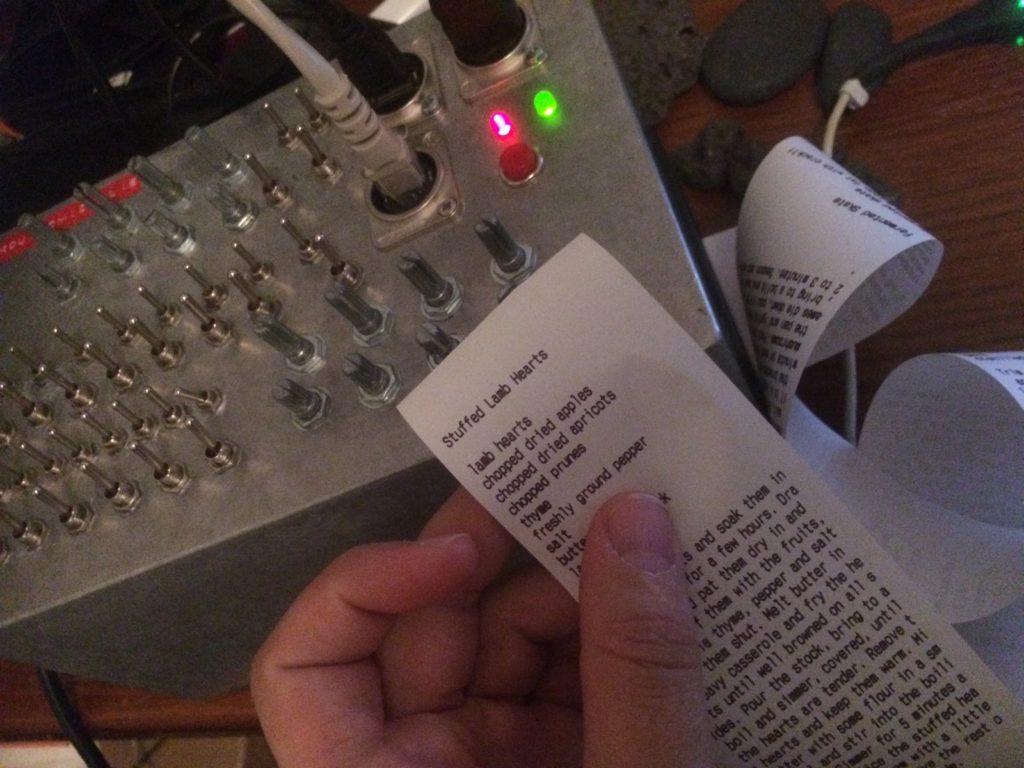
THEBRICK is an DIY instrument designed and created by Marinos Koutsomichalis. It is a programmable device capable of realising live video, image, audio, data, and text printouts in loosely structured fashions. THEBRICK has been originally produced as a live multimedia performance instrument for the 'Sak vītt of verǫld hverja' project. Yet, it has been used in a number of other projects hereafter. It has been envisaged not so much as a 'solution' to presenting Sāk vitt ok vītt of verǫld hverja related material, but, instead, as an experimental instrument that would further nonstandard performance/composition schemata in this context – and eventually also in several others.
THEBRICK
THEBRICK is an DIY instrument designed and created by Marinos Koutsomichalis. It is a programmable device capable of realising live video, image, audio, data, and text printouts in loosely structured fashions. THEBRICK has been originally produced as a live multimedia performance instrument for the ‘Sak vītt of verǫld hverja’ project. Yet, it has been used in a number of other projects hereafter. It has been envisaged not so much as a ‘solution’ to presenting Sāk vitt ok vītt of verǫld hverja related material, but, instead, as an experimental instrument that would further nonstandard performance/composition schemata in this context – and eventually also in several others.
THEBRICK is a programmable device capable of realising live video, image, audio, data, and text printouts in loosely structured fashions. In this way, it may both fuel multimedia improvisation within certain constraints, as well as aid define what exactly these constraints should be about. The instrument comprises two distinct single-board computers that may perform arbitrary tasks with respect to the available inputs, outputs, and hardware controls. In principle, one of them is responsible for multi-channel sound synthesis: it can drive up to eight unbalanced audio outputs and may process up to two channels of input audio. The other reproduces video and/or text by means of an HDMI output and a built-in thermal roll paper printer. It features three distinct UI zones that respectively control printing, video/image reproduction, and audio synthesis. In the case of ‘Sāk vitt ok vītt of verǫld hverja’, realising a particular multimedia narrative with THEBRICK calls the user to select video parts for reproduction, to load the desired audio parts/subparts and to improvise with them, and to print (and possibly share with the audience) paper strips at the appropriate moments. Audio/video parts should be thought of as mini-narratives comprising performance elements to improvise with; they do not necessarily correspond with one another, nevertheless. Once a video part is selected, its integral parts are reproduced sequentially and the user may only pause this stream, or switch to a different part altogether. Once an audio part is selected, the artist may spend an indefinite amount of time improvising with the available synthesis parameters before he moves the next subpart in an incremental fashion, or before he switches to a different part. The material loaded to the instrument would typically allow for the realisation of a few different possible multimedia narratives (and, of course, infinite contingent versions thereof).
THEBRICK is discussed in some detail alongside a number of other DIY instruments by the author in this paper: Koutsomichalis, M. (2020). Rough-hewn Hertzian Multimedia Instruments. In Proceedings of the International Conference on New Interfaces for Musical Expression (Birmingham, UK), pp 619-624.
